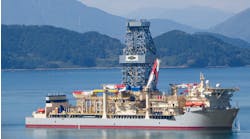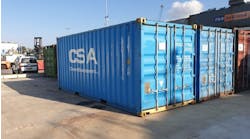If necessity is the mother of invention, then the downturn has opened wide a window of opportunity to fasttrack advances in digital technologies to positively transform what we do now and how the industry will act in the future. Automation, artificial intelligence (AI), and Big Data are not new for oil and gas; in fact, the groundwork started way back in the 1990s. However, a boom period and a culture of conservatism, which still exists to a degree in these tough times, meant the need did not spark the desire or commitment to capitalize on the benefits.
Manufacturing automation, in particular, has been around for a long time but it has now taken leave of the factory, out of machines and into software systems. Today, devices are communicating in unprecedented ways. However, these operations only work because the processes are completely defined, all the inputs and outputs are controlled, and humans are physically removed. When dealing with the offshore rig environment, the situation is very different, as uncertainty caused by incomplete information of subsurface geology for example, behavior of tools, weather, logistics, etc., can mean it is difficult to build integrated, accurate, and smart systems.
The advent of Bayesian systems now gives us a range of intelligent control methods to handle this uncertainty and the means to safely start the proper introduction of automation both on land and offshore. It is not just about moving iron, steel, and operating tools but also managing the interpretation of data to provide meaningful and verifiable results. A case in point is the prognostic health monitoring of equipment, which can be achieved through the use of sensors to acquire reliable, real-time, high frequency data. The aerospace industry significantly reduced its costs by preventing unnecessary maintenance through accurate prediction of the useful remaining life of engine components, as well as flagging potentially costly technical problems. In the oilfield, it has been estimated that asset digitization could cut operational costs by 10-15% and increase production by 5% or more.
Innovations in hardware and software are coming together and implementation is gaining pace. Rig mechanization has been around for some time, but true automation is now being deployed. Also, the automation of surface hardware is being combined with downhole tools, giving unprecedented control and performance. The auto-driller is moving from surface weight control to downhole weight, and automated tripping can now take account of the wellbore conditions to optimize speed for wellbore integrity. Field examples have highlighted how automation can lead to significantly faster drilling rates. We can drill-a-stand automatically and will soon be able to program a section and follow a formation.
Today, such technologies have reached a level of maturity that allows them to be integrated into a broad swathe of applications. The industry is now able to bring together the major sub-systems of drilling operations, such as the bit, fluid system, and bottomhole assembly. Integration brings significant value in helping operators lower their finding and development costs. In order to make a material impact on well cost, it is necessary to optimize the entire system. Next-generation drilling rig systems will bring together the capabilities and benefits of automation and mechanization through integration with established drilling technologies and sub-systems.
Other industries are leading the way. For example, in the mining industry there is an automation program for large open cast developments in Western Australia. This project involves a control center located in Perth, 1,000 mi (1,609 km) away from where fully automated blast hole drilling, extraction, haulage, and transportation of iron ore is taking place. The eyes of the oil and gas world are eagerly watching and learning from these developments with anticipation.
Influential industry experts will come together at SPE Offshore Europe 2017 as part of a panel discussion on New Technologies. They will look at the sourcing and adoption of new digital technologies, automation, and most notably, will consider the relevance of “manpower” in this digital revolution.
While innovations in both hardware and software are coming together in novel ways to measure, control, automate, and deploy intelligence in a wide range of systems, the human factor is still crucial. As the E&P industry recovers and more people re-join the workforce or join the industry for the first time, embedded intelligence will be needed to maintain the new practices that increase productivity, improve efficiency, reinforce standardization, and safely reduce costs. Smart technology can be the catalyst to achieve these ambitions.
The strength of these types of industry events is not only the ability to inform but also give encouragement to decisionmakers and leaders to initiate changes in their own businesses. It is a forum where new ideas are not only disseminated but also the opportunity to meet and learn from the experts who have done it.
Working in a traditionally conservative industry, it often has been hard to get new ideas implemented, however good they are thought to be. The challenge will be to prioritize and work on those with the highest initial cost benefit. More will come as the oil and gas industry adopts learnings from other industries, experience grows, and costs come down. The pace of development and deployment is accelerating and the industry has the chance to make similar progress to the automotive and aerospace markets. The technology is there and it needs to be applied appropriately. Coming out of a downturn with an upbeat mindset is the best time to make the biggest impact.
David White
Senior Technology Advisor
Schlumberger
SPE Offshore Europe 2017 executive committee member


